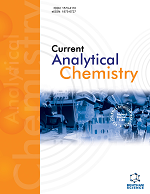
Full text loading...
We use cookies to track usage and preferences.I Understand

Nowadays, the challenge between clean water production and promoting an eco-friendly sorbent for the simultaneous fast and efficient removal of heavy metal ions is a hot topic and has attracted much attention.
The objective of this study was to fabricate a novel material (PATP@PET) by incorporating poly-(2-amino thiophenol; PATP) into the matrix of Saudi Arabian petroleum coke (PET) for simultaneous fast and efficient removal of heavy metal ions.
The FTIR, EDX, SEM, and XRD techniques assessed the chemical structure and surface morphology of the thio-functionalized petcoke. The effects of medium pH, mass dosage of sorbent, metal ion concentration, and coexisting ions were investigated and optimized using batch sorption.
The excellent sorption capacity of PATP@PET sorbent towards the divalent lead and cadmium ions (98.44% and 312.5 mg.g-1 for Pb(II) and 90.15% and 217.4 mg.g-1 for Cd(II)) was realized by strong complex formation with the sulfur atoms of green petcoke and the thiol groups of poly-2-aminothiophenol moieties. The adsorption equilibrium data was best fitted to the pseudo-second-order kinetic model and Langmuir adsorption isotherm. The reusability performance was tested for 10 cycles, and the simultaneous removal of Pb(II) and Cd(II) ions from industrial effluents was accomplished in 30 minutes with 100% removal efficiency at pH 6-7.
PTAP-PET also demonstrated amazing performance for Cd(II) and Pb(II) removal in industrial wastewater samples. Subsequently, PTAP-PET contributes to developing fast, efficient, low-cost water remediation solutions for heavy metal ions that can potentially be translated into industrial-scale applications.

Article metrics loading...

Full text loading...
References


Data & Media loading...